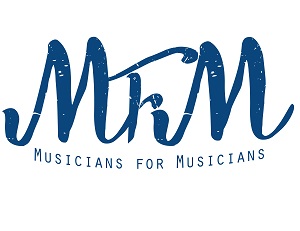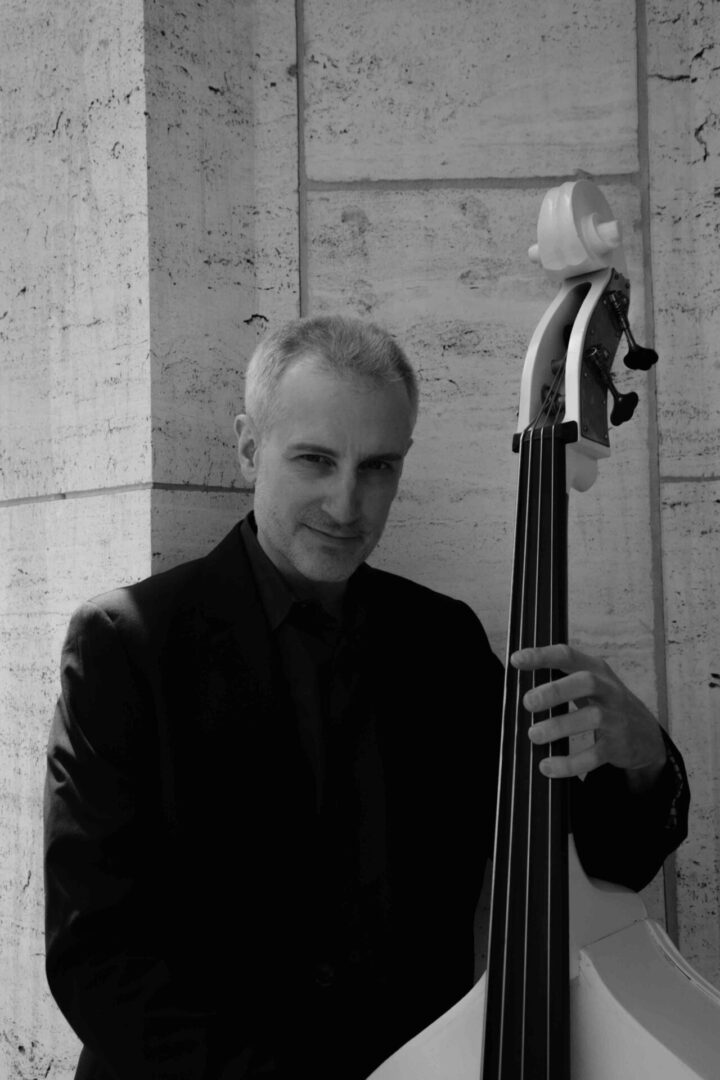MFM Presents: “Music Is Essential” ZOOM Webinar #12 Ron Wasserman: “Transcribing Recorded Music for Live Performance with Dance”
Report by Dawoud Kringle
On Tuesday, November 29, 2022. MFM presented its 12th “Music is Essential” Zoom Talk. The guest speaker was MFM member Ron Wasserman.
Wasserman is a fourth-generation musician with extensive experience of performing, composing, commissioning, and producing music. He has made over 6,000 performances in almost every performing arts genre imaginable; the majority of them as the principal bassist of the New York City Ballet Orchestra.
Wasserman has premiered and/or commissioned works by a large array of composers, including Miho Hazama. Rufus Reid, Courtney Bryan, Stephanie Ann Boyd, as well as his own work. In 2017 his New York Jazzharmonic partnered with The Ashley Bouder Project to accompany professional dance concert performances. He released four CDs of his own jazz and classical music.During the pandemic, Wasserman filmed dance videos, culminating in his “Curbside Nutcracker,” which garnered a viral half-million views, and his fully produced narrative movie filmed at the Bronx Zoo: “Backstage Pass: Carnival of the Animals.” Wasserman’s work with the New York City Ballet, boasts of his arrangements, transcriptions, and/or conducted works by Wayne Shorter, Igor Stravinsky, Astor Piazzolla, and Solange Knowles’
In this Zoom Talk, he would discuss and demonstrate the very specialized skill of transcribing recorded music into notation to be used for dance performances. Music that was composed and recorded by ear, or course must be “reverse engineered” so it can be presented in traditional notation to players for live performances. Wasserman developed a unique process that utilizes a trained contrapuntal ear, several software tools – and a lot of trial and error. Furthermore, an added layer of complexity are considerations towards the needs of choreographers and dancers, and in being a bridge between them and the composer and conductor.
Wasserman began his talk by stating that modern ballet is getting farther away from pre-written classical scores. Choreographers are more interested in using other forms of music such as jazz, pop, and other things. He believes this is the wave of the future.
For this demonstration, Wasserman used only a standard computer, a 64 note MIDI keyboard, and the software: Finale (finalemusic.com) and Transcribe (Music software Transcribe – Transcribe). To illustrate his techniques, he used pieces by Max Richter. Duke Ellington, Wayne Shorter, and Solange Knowles.
He emphasized that working with dancer, the music must be identical every time its played (something I can attest to personally). It’s also important to communicate with the choreographer, keeping in mind that they do not communicate the way musicians do. They think like dancers / choreographers.
At this point, he showed a basic demonstration of how Transcribe software works. The recording is uploaded into the software, and one works with its internal tools to assist in the transcription process (Transcribe doesn’t actually transcribe the music from a recording; it facilitates the process).
He began with a video of a Duke Ellington piece titled “Blossom Got Kissed” which was used by choreographer Susan Stroman. He played part of this video to demonstrate how the choreographed dance parts sync up with the music.
Then he used a piece Max Richter did based on Vivaldi’s Four Seasons. Wasserman had been commissioned to arrange it for jazz big band using an arrangement for solo violin and piano. The violin part was relegated to the soloist. To transform the piano part into big band, he used a combination of analysis of Vivaldi’s original string orchestra and the piano score. Apart from some direction from the choreographer, much of the final decision making process is at the arranger’s discretion.
It should be noted that each choreographer has his or her own way of working. But there are some generalities of how the process works, because the finished product must be used in harmony with a number of different kinds of artistic and technical disciplines.
Wasserman spent some time demonstrating in detail how one would work within a dance framework with a given piece of music. He discussed many of the possible variables one would encounter in these situations.
The next piece he shared was “Play Time” by Wayne Shorter. This was a difficult project for him. It was part of a large work for symphony orchestra and jazz quartet. The ballet was choreographed to the recording, but they insisted the ballet be performed to live music. This meant that a band had to learn and perform this piece. Wasserman described the process he was charged with as “reverse engineering” Shorter’s music. It was a painstaking process because of the complexity of the piece and the needs of the choreographer. He had to notate it note for note so it could be reproduced by a live band, and at the same time sound like it was improvised. The dance parts were choreographed to all the improvised nuances of the original recording.
After a lengthy demonstration, a few questions were taken. MFM president Sohrab Saadat Ladjevardi asked a very relevant question about how Wassrerman got paid for such a lengthy and arduous project. Wasserman explained that he pushed for the gig. He was paid under a union contract. He also shared some experiences in different situations.
This Music Is Essential Talk marked a turning point. Wasserman’s brilliant explanations were not only a valuable educational experience, it proves that there is no limit to what MFM can present.

